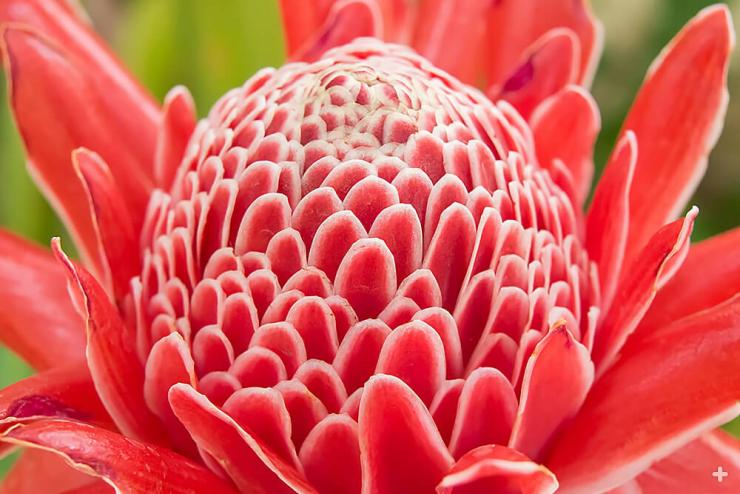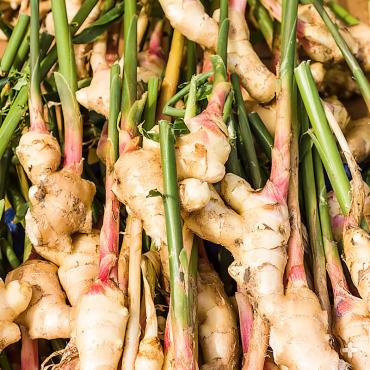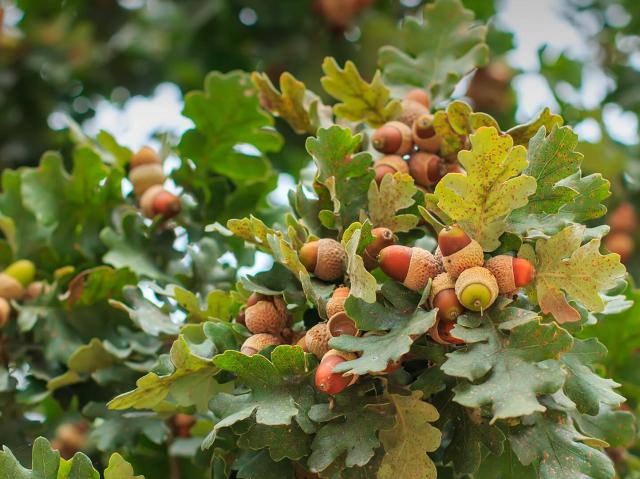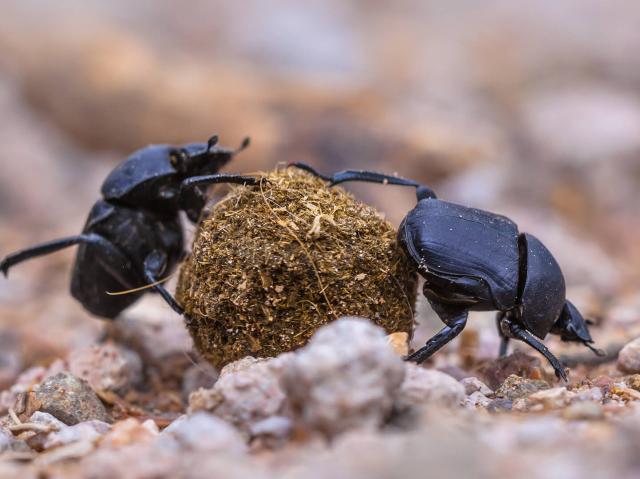
Ginger

- DIVISION: Tracheophyta
- CLASS: Liliopsida (monocots)
- ORDER: Zingiberales
- FAMILY: Zingiberaceae
- GENUS: About 50
- SPECIES: Almost 1,600

OVERVIEW
Yep, the ginger in your gingerbread comes from this family of plants. But it's their elegant bloom clusters and intoxicating scent that make these mostly tropical perennials favorites in the greenhouse, in the garden, or in displays of cut flowers. Ginger flowers come in an amazing variety of shapes and sizes. Nearly 1,600 species in this family grow throughout tropical Africa, Asia, and the Americas. Some, like Aframomum giganteum of Central Africa and Etlingera punicea of Indonesia, stretch to 20 feet (6.1 meters) tall, but most familiar gingers are about 6 feet (1.8 meters) tall. Depending on the variety, a ginger's fragrant blossoms are pollinated by insects or birds.
CHARACTERISTICS
The spicy ginger "root" you might purchase in your local market is really a section of a ginger plant's fleshy rhizome—a horizontal underground stem. Continuously growing rhizomes allow a ginger plant to ramble and spread, sending down roots and sending up tall leafy shoots. Narrow, glossy leaves, which grow alternately in two rows, have parallel veins. Ginger flowers grow in clusters. Each grows in the axil of a modified—sometimes brightly colored—leaf called a bract and bears both male and female organs. A single pistil (female organ) is surrounded by a single functional stamen (male organ). Five sterile stamens are modified; some are fused and look like petals, while the actual petals and sepals are fused into tubular structures. In some, a seed may sprout into a miniature plant as a flower withers, taking root where the flower falls to the ground.
CULTIVATION
While some gingers are hardy enough to grow in temperate gardens, most are tropical plants that require warm temperatures. They require filtered sun, high humidity; moist, rich soil; and temperatures above 50 degrees Fahrenheit (10 degrees Celsius). Still, many gardeners in colder places enjoy growing ginger in the spring and summer. As the foliage withers in winter, they dig up the rhizome, allow it to dry out, and store it in sawdust or sphagnum—as you might store a tropical bulb.
USES
Ornamental gingers are attractive in warm-climate gardens, and flowers are lovely in arrangements. But many are better known (and grown) for spices and medicines. The spice we use in gingerbread is the same one we use in Asian cooking: Zingiber officinale, sometimes called "true" ginger. Galangal, a spice used in some Asian recipes, and melegueta pepper, common in the cuisine in parts of Africa, come from different ginger varieties. Perhaps more familiar, turmeric and cardamom come from gingers, too. Many ginger varieties are used in traditional folk medicines, and as you might expect from their sweet scent, some yield essential oils used in the perfume industry.
CONSERVATION
The IUCN has assessed 104 species of gingers, and lists 30 as vulnerable or endangered, including 4 that are critically endangered. The most common threats to their survival include agriculture, logging, and collection of plants from their natural habitat. Ornamental gingers and those used for folk remedies are now commercially traded, often leading to unsustainable harvests of plants. The Philippine ginger Lily Hedychium philippinense is listed on CITES Appendix II.
Sometimes gingers create conservation concerns: in some tropical places, including as Hawaii, ornamental gingers have flourished and have become invasive plants that displace the native plant communities.
OUR COLLECTION
You'll find a spectacular assortment of gingers, including true ginger Zingiber officinale, at the San Diego Zoo as you travel down the Fern Canyon Trail into Asian Passage. The grandest may be the shell ginger Alpinia zerumbet, native to eastern Asia. Beautiful pendants of shell-like flower grow in late summer. And don't miss the fragrant white butterfly ginger Hedychium coronarium, or the spectacular, yellow-flowering kahili ginger Hedychium gardnerianum, native to India. Unfortunately, kahili ginger has become invasive in Hawaii and other places it has been introduced. (San Diegans can grow kahili ginger with a clear conscience, however. It's not humid enough here for the plant to spread out of control on its own.)
ANTLERS
Because of the plant's immediately recognizable rhizomes, the word "ginger" (as well as the family name, Zingiberaceae) probably is derived from a Sanskrit word that described the shaped of a deer's antlers.
FOLK REMEDIES
Ginger has been credited with relief from arthritis, rheumatism, congestion, coughs, fever, and nausea. Studies on its effectiveness, though, have been inconclusive.
BIG CROP
Our common eating ginger Zingiber officinale is native to India, but today it is it cultivated as a commercial crop in many parts of the world, including India, China, Nepal, Nigeria, Thailand, and Indonesia.
RELATIVES
Gingers are most closely related to canna, banana and bird-of-paradise plants.
GINGER AND YOU
Ginger is prepared fresh, dried, pickled, or powdered. Try growing your own plant by planting a piece of fresh ginger!













